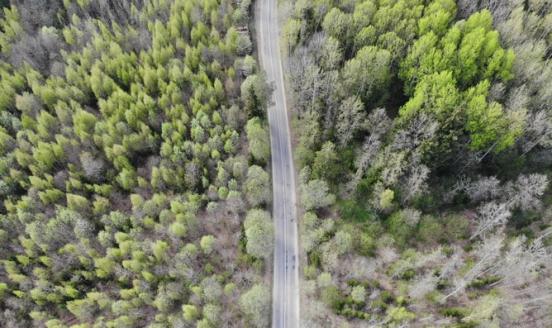Belarus: time to reform
Belarus must speed up its transition to a market economy, in order to return to growth and to avoid a new balance of payments crisis. But such reform
The unreformed economy, high growth and persistent disequilibria
Belarus has kept a largely non-market economic system since the collapse of the Soviet Union in 1991 (see Dabrowski, 2016). However, despite the slow pace of market reforms, the Belarusian economy recorded impressive growth between 1997 and 2011 (Figure 1).
Such high growth was possible due to the combination of administrative dirigisme, a very high rate of government initiated investment (Figure 2) and a favourable external environment.
Belarus enjoyed privileged terms when reselling and processing Russian oil, high demand for Belarusian fertilizers and chemical products on the world market, and relatively inexpensive consumer goods in other post-Soviet countries, primarily Russia.
However, high growth rates came at the cost of huge macroeconomic disequilibria. Despite government price controls, Belarus has suffered from chronic inflation, as Figure 3 shows. The consumer price index increased more than 17-fold (!) between 2000 and 2014, giving the country the dubious honour of inflation champion of the former USSR.
Abrupt devaluations of the Belarusian ruble (BYR) have led to periodic inflation hikes (see Figure 4). The most recent was triggered by the currency crisis in Russia at the end of 2014 and early 2015, which spilled over to other CIS economies. In turn, these devaluations were caused by balance of payments crises. Domestic monetary expansion originating from extensive quasi-fiscal activities has been another source of rapid price growth. While quasi-fiscal operations are present in various sectors of Belarusian economy, such as the energy sector and public utilities forced to provide their services at tariffs below the cost-recovery level, they mainly fall on the banking sector and the central bank.
High inflation and frequent devaluations have undermined trust in the BYR, leading to a high level of dollarization. The ratio of foreign-currency denominated loans to total loans exceeded 55 percent in the first quarter of 2015 according to the IMF.
Belarus has continually recorded high current account deficits (resulting, among other factors, from high investment rates), as Figure 5 shows. Unlike in other transition economies, these were largely financed by official borrowing, mainly from Russia, the Anti-Crisis Fund of the Eurasian Economic Community, and the IMF, and only partly by net inward foreign direct investment (Figure 13).
As a result, the gross international reserves of the National Bank of the Republic of Belarus (NBRB) remained at the low level of $5.1 billion at the end of 2014 (IMF, 2015).
Quasi-fiscal activities
Although Belarus records either fiscal surpluses or relatively small deficits, as Figure 6 shows, it runs substantial domestic quasi-fiscal imbalances concentrated in the NBRB and commercial banks.
State-owned enterprises and farms have to meet production targets and invest in new production capacity, often regardless of the effective market demand for their output. They also have to carry out the government’s required wage increases. Such enterprises are kept afloat by directed loans on highly concessionary terms.
Directed and subsidised loans also support various government programmes, for example in the housing sector. The legal forms of these loans have changed frequently, so measuring them is not an easy task. According to the IMF, their size increased from about 6 percent of GDP in 2010 to 9.3 percent in 2011, and then gradually decreased to about 4 percent of GDP in 2014.
This has been a major driver of the rapid increase in both NBRB reserve money and BYR broad money, and a primary cause of the subsequent balance of payments crises (see Miksjuk et al, 2015).
Directed lending also leads to high levels of non-performing loans in the banking sector, and the need for periodic recapitalisation of state-owned banks. For example, the cost of bank restructuring measures amounted to 4.9 percent of GDP in 2011 and was expected to amount to a further 2.8 percent of GDP in 2015.
In addition, each year, the government must cover part of its credit guarantees related to directed lending. In the period 2011-15, this involved expenditures in the range of 0.3 and 0.9 percent of annual GDP (IMF, 2015). These items were not included in the general government balances reported in Figure 6.
The end of the Belarusian ‘miracle’
Growth has slowed substantially since 2011, as seen in Figure 1. For 2015, a 3.6 percent contraction was expected, according to the IMF World Economic Outlook October 2015 forecasts. The reasons for such a dramatic change are numerous.
Over the years, the country’s relative structural advantages in its trade with Russia and other post-Soviet countries have gradually disappeared. Growth in total factor productivity in Belarus’s dirigiste economy was relatively modest until 2008, and then started to decline (Kruk and Bornukova, 2014).
Unreformed state-owned enterprises not sufficiently exposed to competitive market pressures lost part of their export markets, including Russia and other post-Soviet countries. Russia’s accession to the World Trade Organisation (WTO) in 2012 and the formation of the Eurasian Economic Union (EaEU) exposed Belarusian companies to stronger external competition on the Russian and domestic markets.
In fact, being still far from completing its own WTO accession bid, Belarus has become unilaterally exposed to WTO rules and competition from WTO members (via the EaEU), without symmetric access to their markets.
Russia has gradually withdrawn preferential prices for imported oil and gas for Belarus, reducing substantially the oil and gas-related rents that accrue to the Belarusian economy and budget. The oil price decline in the second half of 2014 further reduced this rent, and led to deterioration in Belarus’s terms of trade.
The required reform agenda
To avoid a new balance of payments crisis and to return to growth Belarus must speed up its transition to a market economy.
Since the end of 2014, there have been some attempts to modify Belarus’s economic policy, including personnel changes in the government economic team and the NBRB, and a change in official rhetoric in favour of less government control.
For the first time, the presidential election in October 2015 was not preceded by massive credit expansion and administrative pressure for wage increases. The new leadership of the NBRB announced that it would move to a flexible exchange rate for the BYR and monetary targeting, which will replace the previous regime of a crawling band against a currency basket. However, so far it has failed to stop rapid depreciation of the Belarusian ruble.
On the microeconomic front, there have been some measures to restructure the largest state-owned enterprises, including cutting excess jobs (Alachnovic, 2015). These moves go in the right direction, but are not sufficient to restore growth and ensure macroeconomic stability in the long term. A more ambitious reform agenda is needed.
Belarus should abandon price controls, direct and indirect subsidies, and full current account convertibility of the BYR. It should stop quasi-fiscal operations, in particular, directed lending. The NBRB must obtain genuine independence with a single mandate to ensure price stability.
However, this is not enough. As previous experience demonstrates, macroeconomic stabilisation will not be sustainable without accompanying microeconomic, structural and institutional reforms.
These should involve a broad set of measures aimed at, among other objectives, dismantling the remnants of the command system, large-scale privatisation, opening up to foreign investment, completing WTO accession, closing down loss-making firms, easing the business and investment climate and reforming the financial system.
Such an agenda will not be easy, economically, socially or politically. It remains to be seen whether the country’s authorities will be ready to go so far. Aside from the usual political risks that accompany extensive market reforms in any country, in Belarus reform has always been seen as a challenge to its authoritarian political regime.
However, continuation of the status quo will not result in economic growth and improvements in living standards, the basic preconditions of the regime’s political legitimacy.
References
Alachnovic, A. (2015) ‘Reforms in Belarus are underway despite the recession and the elections’, Central European Financial Observer.eu, 9 October, available at http://www.financialobserver.eu/cse-and-cis/reforms-in-belarus-are-underway-despite-the-recession-and-the-elections/
Dabrowski, M. (2015) ‘it’s not just Russia: Currency crisis in the Commonwealth of Independent States’, Policy Contribution 2015/01, Bruegel, https://bruegel.org/wp-content/uploads/imported/publications/pc_2015_01_CIS_.pdf
Dabrowski, M. (2016) ‘Belarus at a crossroads’, Policy Contribution 2016/02, Bruegel, https://bruegel.org/wp-content/uploads/2016/01/pc_2016_02.pdf
IMF (2015) ‘Republic of Belarus: 2015 Article IV Consultation-Press Release; Staff Report; and Statement by the Executive Director for the Republic of Belarus’, IMF Country Report, No. 15/136, 29 May, available at http://www.imf.org/external/pubs/ft/scr/2015/cr15136.pdf
Kruk, D. and K. Bornukova (2014) ‘Belarusian Economic Growth Decomposition’, BEROC Working Paper Series No. 24, 11 February, Belarusian Economic Research and Outreach Center (BEROC), available at http://eng.beroc.by/webroot/delivery/files/WP_24_eng_Bornukova&Kruk.pdf
Miksjuk, A., S. Ouliaris and M. Pranovich (2015) ‘The Game of Anchors: Studying the Causes of Currency Crises in Belarus’, IMF Working Paper WP/15/281, available at http://www.imf.org/external/pubs/ft/wp/2015/wp15281.pdf
Marek Dabrowski ([email protected]) is a Non-Resident Scholar at Bruegel, Professor at the Higher School of Economics, Moscow, and Fellow at the Centre for Social and Economic Research, Warsaw.


